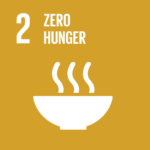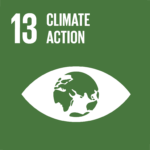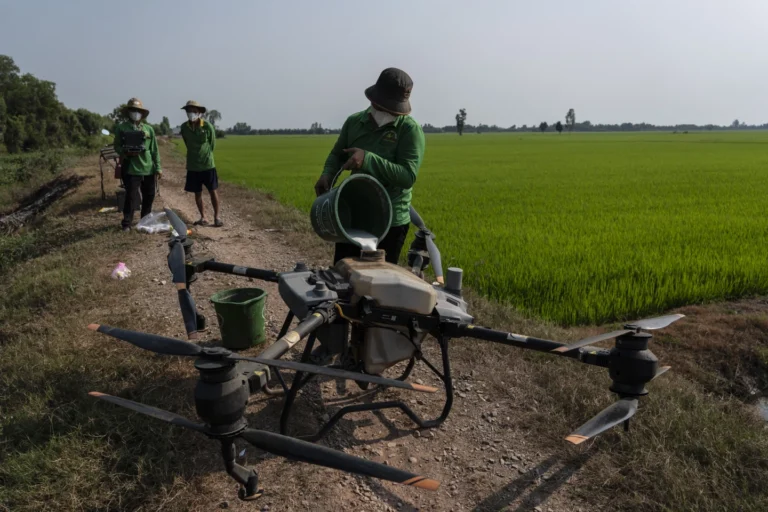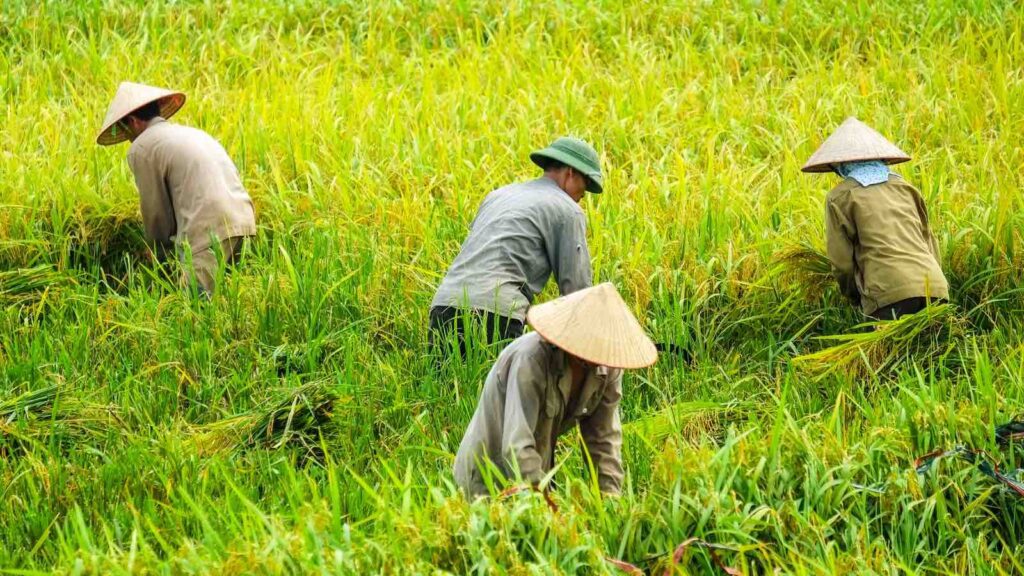From drones to dry fields, centuries-old farming is being reimagined to fight climate change and preserve a way of life.
In Long A province, at first glance, Vo Van Van’s rice field looks just like the thousands of other emerald squares in the Mekong Delta. But one detail sets it apart: it’s not entirely underwater. Add to that the mechanical whirr of a drone fertilizing crops from above, and you have the beginnings of a quiet agricultural revolution—one that may hold the key to both Vietnam’s climate goals and its food security.
Van is part of a growing movement of rice farmers shifting away from traditional water-intensive methods. Instead, they’re embracing innovations like alternate wetting and drying (AWD) and drone-assisted fertilization—climate-smart practices aimed at reducing methane emissions from rice paddies, a surprising but significant contributor to global warming.
RELEVANT SUSTAINABLE GOALS



Rice’s Dirty Secret: Methane from the Fields
Methane, a greenhouse gas more than 80 times as potent as carbon dioxide over two decades, is a byproduct of flooded rice fields. When water blankets the soil, oxygen is kept out, creating perfect conditions for methane-producing bacteria. Globally, rice production contributes around 8% of all human-made methane emissions, according to the Food and Agriculture Organization.
Vietnam, the world’s third-largest rice exporter, is especially vulnerable to this paradox. The Mekong Delta, its rice heartland, produces 90% of Vietnam’s exported rice and is increasingly under threat from climate-induced flooding, drought, and salinization.
Climate Solutions, From Drones to Straw Mushrooms
Van’s adoption of AWD irrigation allows fields to dry intermittently, reducing water use and methane emissions without sacrificing yield. Drones, meanwhile, save labor costs and apply fertilizer more precisely—cutting down on nitrogen-based emissions and soil degradation. Instead of burning rice stubble, Van now sells it for livestock feed or straw mushroom cultivation, further reducing air pollution.
The shift pays off. His production costs have dropped, yields remain stable, and the rice can be sold at a premium in European organic markets. “Best of all,” he says, “I have more time for my own garden.”
Van is not alone. He’s part of a program supported by the Loc Troi Group, one of Vietnam’s largest rice exporters. The company claims these new methods use 40% less seed and 30% less water, while reducing reliance on pesticides and labor.
Loc Troi is now expanding the model from 100 hectares to 300,000 hectares—a substantial move, but still short of Vietnam’s national target of converting 1 million hectares to “high-quality, low-emission” rice farming by 2030. If reached, this target could cut production costs by 20% and boost farmers’ profits by $600 million, according to Vietnam News.

Fighting the Tide in the Mekong Delta
Vietnam’s shift toward sustainable rice farming isn’t just driven by economics. It’s a response to the very real and growing impacts of climate change. Sea level rise is turning freshwater brackish. Upstream dams in China and Laos are choking off sediment flow. Overuse of groundwater and rampant sand mining are sinking the delta.
These changes threaten a way of life deeply tied to rice, a crop that holds cultural, economic, and even spiritual significance in Vietnam.
Vietnam was the first major rice exporter to sign the 2021 Global Methane Pledge. The World Bank is now backing the country’s efforts and has launched similar projects in Indonesia and beyond. Bank President Ajay Banga called methane reduction one of the “rare, clear areas” where inexpensive, replicable solutions exist.
But challenges remain. Methane reduction receives just 2% of global climate finance. Meanwhile, unpredictable rainfall complicates traditional sun-drying methods. In response, some exporters like Hoang Minh Nhat are investing in mechanical dryers closer to farms, adapting their logistics to a changing climate.
Experts like Columbia University’s Lewis Ziska suggest that a mix of water management and genetic diversity—rice varieties more tolerant of heat, salinity, or low water—could play a key role in the future of sustainable rice.
For now, farmers like Van represent the front line in a global battle that’s equal parts environmental, economic, and cultural. By cutting emissions and boosting resilience, they’re not just preserving their harvests—they’re preserving a heritage.
Lead image courtesy of Cristal Tran from Getty Images Pro (Vietnam Farmers)
You may also be interested in :
A New Rice Revolution: Scientists Slash Methane Emissions By 70%




